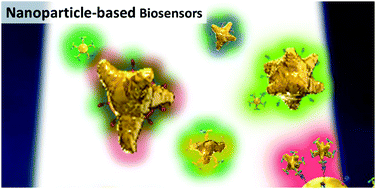Single plasmonic nanostructures for biomedical diagnosis
Abstract
The field of single nanoparticle plasmonics has grown enormously. There is no doubt that a wide diversity of the nanoplasmonic techniques and nanostructures represents a tremendous opportunity for fundamental biomedical studies as well as sensing and imaging applications. Single nanoparticle plasmonic biosensors are efficient in label-free single-molecule detection, as well as in monitoring real-time binding events of even several biomolecules. In the present review, we have discussed the prominent advantages and advances in single particle characterization and synthesis as well as new insight into and information on biomedical diagnosis uniquely obtained using single particle approaches. The approaches include the fundamental studies of nanoplasmonic behavior, two typical methods based on refractive index change and characteristic light intensity change, exciting innovations of synthetic strategies for new plasmonic nanostructures, and practical applications using single particle sensing, imaging, and tracking. The basic sphere and rod nanostructures are the focus of extensive investigations in biomedicine, while they can be programmed into algorithmic assemblies for novel plasmonic diagnosis. Design of single nanoparticles for the detection of single biomolecules will have far-reaching consequences in biomedical diagnosis.

- This article is part of the themed collection: Responsive Materials for Healthcare Diagnostics


 Please wait while we load your content...
Please wait while we load your content...